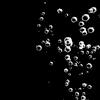Yes, you can clean a bong with hydrogen peroxide, but it’s best used for light cleaning and sanitation, not heavy resin. It’s non-flammable and won’t corrode quality borosilicate glass when rinsed properly, but it’s less effective than isopropyl alcohol for deep cleans.

Hydrogen peroxide is cheap, easy to find, and gentle on your glass, but if your bong has thick resin buildup, this mild antiseptic won’t cut it on its own. Still, it has its place in routine maintenance, especially when paired with salt or baking soda and used on high-quality glass like TAG’s ultra-thick beakers.
Whether you're worried about toxic residue, damaging your logos, or simply looking for a safe, effective alternative to alcohol, this guide will give you the full breakdown.
Want to know if peroxide is the right solution for your bong? Curious about safer, stronger alternatives? Keep reading. We’ll walk you through everything you need to know, plus how Thick Ass Glass bongs hold up to any cleaning method.
Is Hydrogen Peroxide Effective at Cleaning Resin and Gunk?
Hydrogen peroxide has strong antibacterial properties, but let’s be clear, it’s a disinfectant, not a resin-cutting solvent.
The 3% concentration sold in most stores is great for killing microbes and deodorizing your bong, but when it comes to breaking down thick, tar-like resin? It struggles.
That’s why hydrogen peroxide is best used for light maintenance. If you’re cleaning your piece regularly, it can help keep things fresh and sanitary between deep cleanings.
But if your bong hasn’t seen a rinse in weeks, peroxide alone likely won’t cut it.
Pro Tip: When paired with salt or baking soda, hydrogen peroxide’s bubbling action can help dislodge some surface grime, but you’ll still need to scrub. It’s also safe to warm slightly (not boil) for better results.
And no, don’t confuse hydrogen peroxide (H₂O₂) with hydrogen gas (H₂). You can’t clean a bong with hydrogen gas, and yes, it is highly flammable. Stick with the bottled antiseptic for safe, controlled cleaning.
How to Clean a Bong With Hydrogen Peroxide (Step-by-Step)
Running low on isopropyl alcohol? Hydrogen peroxide can still get the job done for routine upkeep, if you know how to use it right.
Follow this simple method to keep your glass clean, odor-free, and functioning at its best.
What You’ll Need:
-
3% hydrogen peroxide
-
Salt or baking soda (optional for abrasion)
-
Rubber stoppers or corks (to plug openings)
-
Cotton swabs or pipe cleaners
-
Gloves and good ventilation
Step-by-Step Instructions:
-
Rinse with Warm Water
Start by rinsing your bong with warm water to loosen surface gunk and prep for cleaning.
-
Add Hydrogen Peroxide (and Salt or Baking Soda)
Fill your bong with 3% hydrogen peroxide. For added abrasion, sprinkle in salt or baking soda to help scrub during the shake.
-
Seal and Shake
Use rubber stoppers or corks to plug all openings, then shake vigorously for 30–60 seconds. This helps dislodge loose grime.
-
Let It Soak
Allow it to sit for 15–30 minutes. Silicone pieces can benefit from even longer soaks (up to several hours).
-
Clean the Accessories
Remove and scrub the downstem and bowl separately using pipe cleaners or cotton swabs dipped in peroxide.
-
Rinse Thoroughly
Rinse every part of the bong with warm water several times to remove any remaining peroxide and grime.
Pro Tip: Use a fine mesh strainer when pouring out the liquid to catch dislodged resin before it clogs your sink.
Common Worries About Using Hydrogen Peroxide on Your Bong
Before pouring hydrogen peroxide into your prized piece, it's natural to wonder if it's safe or even worth the effort.
Here’s what you need to know to clean with confidence, without risking your lungs or your glass.
Will I inhale toxic residue?
Not if you rinse thoroughly. Hydrogen peroxide breaks down into water and oxygen, but any leftover solution can irritate the lungs if inhaled.
After cleaning, rinse every component several times and allow the bong to fully air dry before using it again.
Will it damage my high-end glass?
Not when you're using durable, borosilicate glass like the kind found in Thick Ass Glass pieces. TAG’s joints and welds are built to handle repeated exposure to cleaning agents.
However, avoid soaking soft glass, painted pieces, or low-grade acrylics too long, these materials are more prone to wear.
Will it clean as well as ISO?
No. Hydrogen peroxide is not a solvent, it doesn’t break down resin like isopropyl alcohol. It can loosen grime when combined with abrasion, but for heavy buildup, ISO + salt is still the superior method.
Will it ruin colored or sandblasted logos?
TAG’s flame-polished and sandblasted logos are resistant to peroxide when rinsed promptly. Unlike fragile decals or painted-on designs, TAG’s aesthetics are built to last, even under repeat cleaning cycles.
Used properly, hydrogen peroxide is a gentle, budget-friendly tool in your cleaning arsenal, but knowing its limits is key to preserving both function and form.
Better Alternatives: What Actually Works Best?
While hydrogen peroxide has its place, it's not the only, or the most powerful, option for cleaning your bong.
Depending on how dirty your piece is, you may need to reach for something stronger, faster, or more efficient.
Here’s how other popular methods stack up:
Rubbing Alcohol + Salt
Still the undisputed king. Isopropyl alcohol (91–99%) combined with coarse salt works as both solvent and abrasive, breaking down resin and scrubbing it away in one go. Fast, cheap, and incredibly effective.
Boiling Water (Glass Only)
An old-school method that works in a pinch. Boiling water can help loosen resin, but it comes with serious risks, especially for glass that is not built thick enough to handle thermal shock.
Not recommended unless you're using something like TAG's ultra-thick glass that resists cracking.
Commercial Cleaners (e.g., Formula 420)
Convenient and made specifically for resin, but they’re more expensive and often leave behind chemical residues if not rinsed properly.
OxyClean or Baking Soda + Vinegar
A natural solution for mild buildup. These DIY options create fizzing action to help lift grime, but are not strong enough to handle resin-heavy pieces on their own.
Should You Clean With Hydrogen Peroxide or Not?
Hydrogen peroxide absolutely can clean your bong, but that doesn’t mean it’s always the best option.
If your piece only has light buildup or you’re in a pinch without isopropyl alcohol, peroxide gets the job done for basic maintenance. It’s especially useful when paired with salt or baking soda to boost its cleaning power.
But if your bong is loaded with months of sticky resin or features multiple percs and chambers, hydrogen peroxide will fall short.
In those cases, you’re better off with a deep-cleaning solution like ISO + salt, which dissolves and scrubs away heavy residue efficiently.
So, what’s the takeaway? Peroxide is great for routine upkeep, low-effort sanitizing, and sensitive use cases, but when it’s time for a full reset, go with what works best: high-grade alcohol and a little elbow grease.
Your lungs, and your glass, will thank you.


